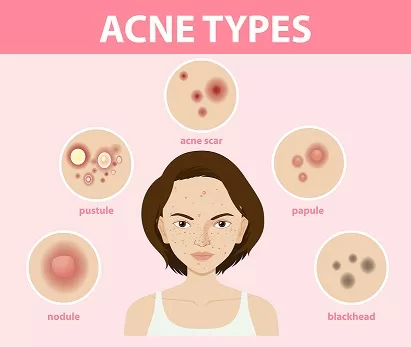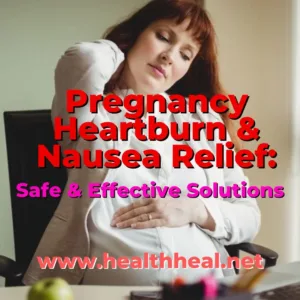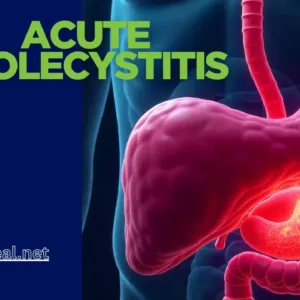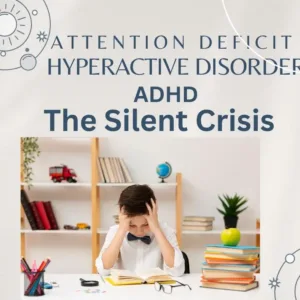Introduction
Acne. The bane of many teenagers’ (and sometimes adults’) existence. Those pesky pimples, blackheads, and whiteheads can not only cause frustration but also impact self-esteem. But fear not, acne warriors! we will shed light on acne, from its root causes to effective management and prevention strategies.
What is Acne?
Acne vulgaris is a chronic skin condition that occurs when hair follicles become clogged with oil and dead skin cells. This blockage creates an ideal environment for bacteria to grow, leading to inflammation and the formation of pimples.
What Causes Acne?
It occurs when hair follicles become clogged with oil and dead skin cells. Several factors contributes :
- Excess Sebum Production: Sebaceous glands produce an oily substance called sebum. When sebum production increases, it can mix with dead skin cells and clog pores.
- Clogged Hair Follicles: Dead skin cells can accumulate and stick together inside hair follicles, leading to blockages.
- Bacteria: The bacterium Propionibacterium acnes (P. acnes) naturally lives on the skin. When a follicle is blocked, it provides an ideal environment for bacteria to multiply, causing inflammation.
- Hormonal Changes: Hormones such as androgens increase during puberty and can cause sebaceous glands to enlarge and produce more sebum. Hormonal changes related to menstruation, pregnancy, and stress.
- Diet: Certain dietary factors, including high glycemic index foods and dairy products.
- Medications: Some medications, including corticosteroids, androgens, and lithium.
- Genetics: If your parents had acne, you’re more likely to experience it as well.
- Stress: Stress can exacerbate acne symptoms.
- Certain environmental condition like air pollution and high humidity .
Signs and Symptoms
The signs and symptoms can vary depending on the severity of the condition:
Here are the different types:
- Comedones are non-inflammatory blockages in the pore. They can be either:
- Whiteheads: Closed clogged pores filled with pus.
- Blackheads: Open clogged pores that appear black due to sebum (oil) oxidation.
- Papules: Small, red, inflamed bumps. These are caused by the breakdown of the pore wall by bacteria.
- Pustules: Small, white-filled pimples with a red base (what most people think of as pimples). Pustules are also caused by bacteria breaking down the pore wall, but they also contain pus.
- Nodules: Large, solid, painful bumps that lie deep within the skin. Nodules form when inflammation extends deeper into the skin.
- Cysts: Large, pus-filled nodules that can cause scarring. Cysts are the most severe form and can leave permanent scars.

Types
Diagnosis
Acne is typically diagnosed through a physical examination by a healthcare provider, such as a dermatologist. The diagnosis is based on the appearance of the skin and the types of lesions present. In most cases, further testing is not necessary unless an underlying condition is suspected.
Grading
Simple Grading Systems:
-
Grading by Lesion Type: This basic approach categorizes acne based on the predominant type of lesions present:
- Comedonal : Predominantly whiteheads and blackheads.
- Papulopustular: Primarily papules and pustules.
- Nodular/cystic: Characterized by deeper, more inflamed nodules and cysts.
-
Grading by Number of Lesions: This method assigns severity based on the total number of lesions (comedones, papules, pustules) on the face or a specific area. A higher number of lesions indicates more severe form.
Numerical Grading Systems:
- Global Acne Grading System (GAGS): This scale assigns a score from 0 (no acne) to 12 (most severe) based on the type, number, and distribution of lesions across the face, chest, and back.
Here’s a general breakdown of acne severity based on some common characteristics, but remember, a doctor will make the final diagnosis and determine the best course of treatment:
- Mild Acne: Predominantly comedones with few papules and pustules. May have a minimal impact on quality of life.
- Moderate Acne: A combination of comedones, papules, and pustules, possibly with some nodules. Can cause emotional distress and potentially leave scarring.
- Severe Acne: Dominated by nodules and cysts, with a significant inflammatory component. Can have a major impact on quality of life and lead to significant scarring.
If you’re concerned about your acne, it’s important to consult a dermatologist.
Management
It often requires a multifaceted approach, combining lifestyle changes, over-the-counter treatments, and, in more severe cases, prescription medications.
- Topical Acne Cream:
- Benzoyl Peroxide: Reduces bacteria and helps prevent clogged pores.
- Salicylic Acid: Helps to unclog pores and reduce inflammation.
- Retinoids: Promote cell turnover and prevent hair follicle clogging.
- Antibiotics: Reduce bacteria and inflammation.
- Azelaic acid: This is a natural acid found in various grains such as barley, wheat and rye. It kills microorganisms on the skin and reduces swelling.
- Dapsone : Its a topical gel .It treat inflamed Acne with its anti-inflammatory action.
- Oral Medications:
- Antibiotics: It includes Tetracycline , Minocycline and Doxycycline. Used in moderate to severe cases to reduce bacteria and inflammation.
- Hormonal Treatments: Low dose estrogen and progesterone (Birth control pills) or spironolactone (anti-androgens) can help in cases related to hormonal fluctuations.
- Isotretinoin: A powerful retinoid used for severe or treatment-resistant acne.
-
Additional Acne Therapies:
-
Acne Surgery: In-office procedures performed by a dermatologist to address specific lesions.
- Extraction: Removal of blackheads and whiteheads.
- Injection: Corticosteroids can be injected into nodules and cysts to reduce inflammation.
-
Light Therapy: Blue light therapy targets P. acnes bacteria and reduces inflammation. May be used in combination with other treatments.
- Steroid: Severe one can be treated with steroid injections into large nodules to reduce inflammation.
-
Sulfur Acne Treatment :
Sulfur has been used for decades as an effective treatment for acne due to its antibacterial and keratolytic properties. It helps to dry out the surface of the skin to absorb excess oil (sebum), while also exfoliating dead skin cells that can clog pores.
How Sulfur Works
Antibacterial: Sulfur helps reduce the bacteria on the skin that can lead to acne breakouts.
- Keratolytic Effect: It helps to shed dead skin cells from the surface layer, preventing clogged pores.
- Oil Absorption: Sulfur absorbs excess oil from the skin, reducing shine and the likelihood of pore blockages.
Forms of Sulfur Treatment
- Sulfur Soap: Often used for mild to moderate cases. It can be used daily to cleanse the face and affected areas.
- Topical Creams and Gels: Usually contain sulfur as an active ingredient in concentrations ranging from 3% to 10%. These can be applied directly to acne spots or affected areas.
- Face Masks: Sulfur masks can be used weekly to deeply cleanse and exfoliate the skin.
- Combination Products: Sometimes sulfur is combined with other acne-fighting ingredients like benzoyl peroxide or salicylic acid for a more comprehensive treatment.
- Lifestyle and Home Remedies:
- Gentle Cleansing: Wash the affected area with a mild cleanser twice daily.
- Avoid Picking or Squeezing: This can lead to further inflammation and scarring.
- Non-comedogenic Products: Use skincare and makeup products labeled as non-comedogenic, meaning they won’t clog pores.

Dietary Supplement
Zinamax is a dietary supplement designed to support skin health from the inside out. Unlike topical treatments that only address the surface layer of the skin, Zinamax works internally to combat the root causes of skin issues such as acne, inflammation, and blemishes. This holistic approach ensures that the skin is not only treated but also nourished and rejuvenated from within.
To read more about Zinamax, visit site : https://www.healthheal.net/ultimate-power-of-zinamax-for-clear-complexion/
Prevention
It involves maintaining a consistent skincare routine and making lifestyle adjustments:
- Skincare Routine: Cleanse your face twice daily with a gentle cleanser. Avoid harsh scrubbing, which can irritate the skin.
- Healthy Diet: Eat a balanced diet rich in fruits, vegetables, and whole grains. Limit intake of high glycemic index foods and dairy products if you find they trigger your acne.
- Hydration: Drink plenty of water to keep your skin hydrated.
- Stress Management: Practice stress-reducing techniques such as yoga, meditation, or regular exercise.
- Hair Care: Keep hair clean and away from your face to prevent oil and dirt from clogging pores.
- Sun Protection: Use non-comedogenic sunscreen to protect your skin from harmful UV rays.
Conclusion
Acne is a multifactorial condition that can significantly impact an individual’s quality of life. Understanding its causes, symptoms, and treatment options is crucial for effective management and prevention. By adopting a comprehensive approach that includes proper skincare, lifestyle modifications, and medical treatments when necessary, individuals can achieve clearer skin and improved confidence. If over-the-counter treatments do not help, seeking advice from a dermatologist is recommended to explore more targeted therapies.




